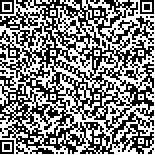下载中心
优秀审稿专家
优秀论文
相关链接
摘要

高光谱图像经过辐射校正后,消除了探测元的响应差异,能更好地满足专题信息提取的数据要求.利用探测元的列均值、列标准差等统计信息对天宫一号高光谱短波红外数据进行辐射校正检验,并基于GPU CUDA计算模型对均值归一化、矩匹配、相邻列均衡等3种相对辐射校正算法进行了并行计算优化.通过辐射校正计算流程拆分,CPU控制流程逻辑,GPU执行数据级并行计算,并建立CUDA的计算单元与数据单元的映射关系,获得5—7倍的计算加速比,这些辐射校正算法依据图像自身统计信息,且易于进行并行计算优化,满足实时校正的处理时效要求,为未来高光谱数据在轨实时辐射校正提供了新思路.
Radiometric normalization is a key pre-processing technology for thematic mapping using hyperspectral images, which aims at eliminating response differences among the detectors. The short wave and infrared bands of the Tiangong-1 hyperspectral images were radiometric normalized using column average and standard deviation methods. Thus, three radiometric normalization algorithms including mean normalization, moment matching normalization and adjacent column balanced normalization were used for performance evaluation. Meanwhile, these three algorithms were parallel implemented on graphics processing units and compute device unified architecture. The parallel implementation methods mainly by decomposition the processing flow, which the CPU focus on procedure control and the GPU focus on data level parallel computing. A mapping model also established between the parallel computing units and the image pixels for further performance improvement. Overall, the parallel computing methods achieved a speedup about 5 times to 7 times when compared with the CPU counterparts. The proposed radiometric normalization algorithms dependent on image statistics and easy for parallel computing, which provides a thoughtful perspective on the potentials of adapting these techniques to on-board as well as on-the-ground hyperspectral image real time processing.

